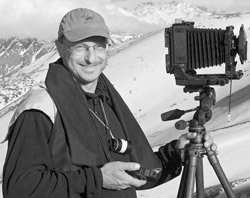
Alle Fotos in diesem Beitrag © by Laurent Geslin
Aus der Reihe unserer Vorstellung weiterer Projekte, Initiativen und Personen rund um das Thema "urbane Wildnis", freuen wir uns ganz besonders über das Gespräch mit Laurent Geslin. Er wird aufgrund seines bekannten Projekts "Urban Safari", wie er selbst etwas ironisch meint, als der "Urban Wildlife Photographer" gesehen, obwohl sich sein fotografisches Schaffen keineswegs nur auf die Stadtwildnis beschränkt. Für Wiener Wildnis hat er einige Fotos von seiner urban Safari zur Verfügung gestellt:

Hier das Interview mit Laurent:
Wiener Wildnis (WW): Laurent, please tell us a little bit about you and your biography as photographer? Have you always been into nature photography, do you work as professional photographer or wildlife biologist?)
Laurent Geslin: I used to be wildlife guide. First in France then in Namibia I was already taking pictures. I became a professional photographer when I moved to London.
WW: Please describe in short, how your Urban Safari project was born?
Laurent Geslin: As I was working in commercial photography in London, I was missing “my” wildlife. But looking closer, I discover that in the english capital a lot of parks would host a lot of birds and even mammals like red foxes. I soon realized, that just behind my photography studio, an old cemetry had 3 families of foxes. I came every morning for 3 years... that's how I started.

WW: What was the challenge of shooting wildlife in an urban environment
Laurent Geslin: I heard many “pure” wildlife photographers saying, that urban wildlife is not really wildlife photography. I think it is much more challenging than being driven around in a 4x4 in Masai Mara, where you don't have much creativity for your pictures.
In an urban setting, the background is important, to be sure that the pictures will be understood quickly, but it can't be too messy. The light is as crucial as in nature. I think to get a really good picture, you'll have to work as hard as in a forest or marsh.
WW: What message is behind these kind of images/your “Safari Urbain” project.
Laurent Geslin: I now work a lot with different cities, and my pictures are used to convice politicians of the importance of biodiversity in the town. I have seen some improvement and now urban wildlife is a topic that a lot of people talk about.

WW: Should more photographers do it – will it be the next photographers “fashion-trend”?
Laurent Geslin: Many young photographers are contacting me to have some tips. I think for urban photographers, it is a good way to escape the city life and discover their own town with a fresh eye.
WW: What was the most difficult subject to photograph – or the most difficult shot to take?
Laurent Geslin: When I was working on urban foxes, I really wanted a territorial behavior that I only spotted few times from far away.
So I tried for several weeks waiting on a boundary of 2 territories in the cemetry in London. Finally, one morning, 2 adults confronted each others... they walked side by side with a mechanical attitude, legs stretched. I got few pictures of this rare moment and was really happy to get those shots.
WW: Do you have a favorite species? (or what do think was your most unsual/strange urban creature?)
Laurent Geslin: Because I have been working for so long with urban foxes, and I learned a lot about their behavior, I really like this species.
But photographing a peregrine falcon hunting above the buildings, being lying down surrounded by wild boars in Barcelona, or taking a wide angle shot of a brown bear in Romania... that seemed to be rather unusual and exciting.

WW: Is “Urban Safari” still an ongoing project or is it finished?
Laurent Geslin: I am now seen as the “urban wildlife photographer”, it is sometime a bit frustrating as I have a bit more than urban wildlife pictures, but when I am called to photographed a species that I haven't photographed yet, I am always happy to take my camera and carry on “my” urban safari.
WW: Where did you present your images already and where will they be seen in the future? (Exhibitions, AV-shows, Books)
Laurent Geslin: My work has been popular in the UK, where I was living. I participated last year at the GDT talks, and my exhibition is running in different cities, in Switzerland and France. Next month a new exhibition will open in Grenoble, a city near Lyon.

WW: Have you ever visited Vienna (or considered to) as part of your project?
Laurent Geslin: I visited Vienna when I was much younger, I did a tour of Europe on hitchhiking, it took me 2 months to reach Austria. If you invite me to photograph your roe deers and your hamster, I will surely take another way to come this time!
Über Laurent Geslin:
Laurent Geslin arbeitete als Wildlife-Guide in Frankreich, Südafrika und Namibia, bevor er nach London zog. Dort begann er die urbane Wildnis Londons zu fotografieren. Sein Projekt „Urban Safari“ wurde in zahlreichen europäischen Städten vorgestellt, mit dem Ziel die Wichtigkeit für den Schutz der urbanen Natur zu zeigen. Auch in diesen Städten porträtierte Laurent die Tierwelt mit seiner Kamera und fotografierte Füchse, Dachse, Wildschweine und sogar Bären. Seine Werke wurden in zahlreichen Büchern und Magazinen veröffentlicht.











